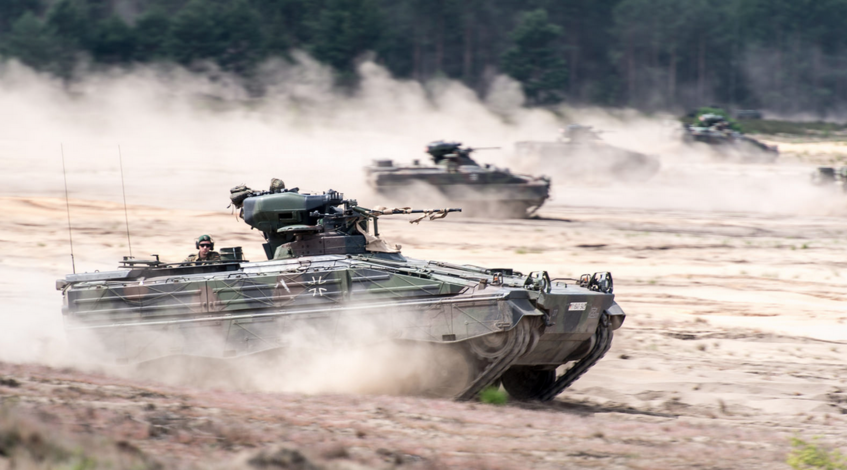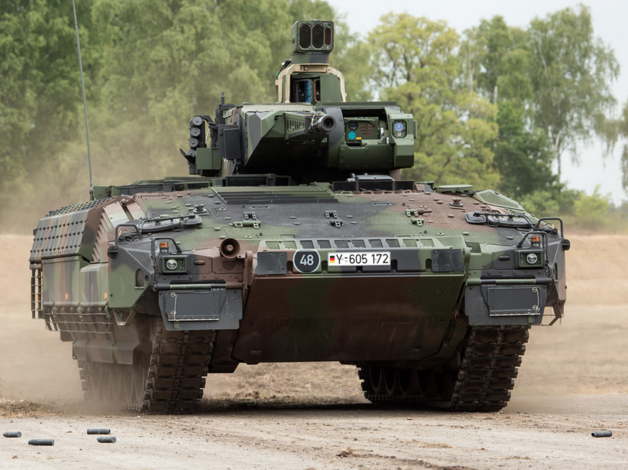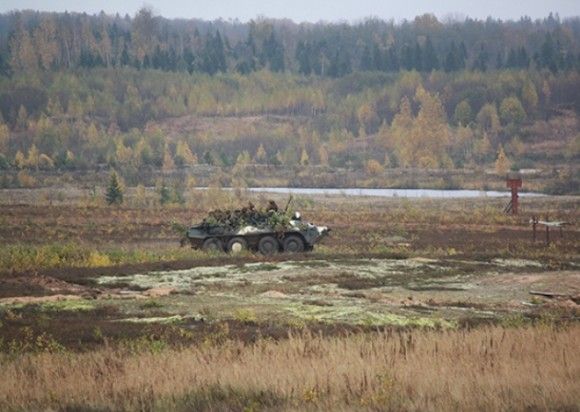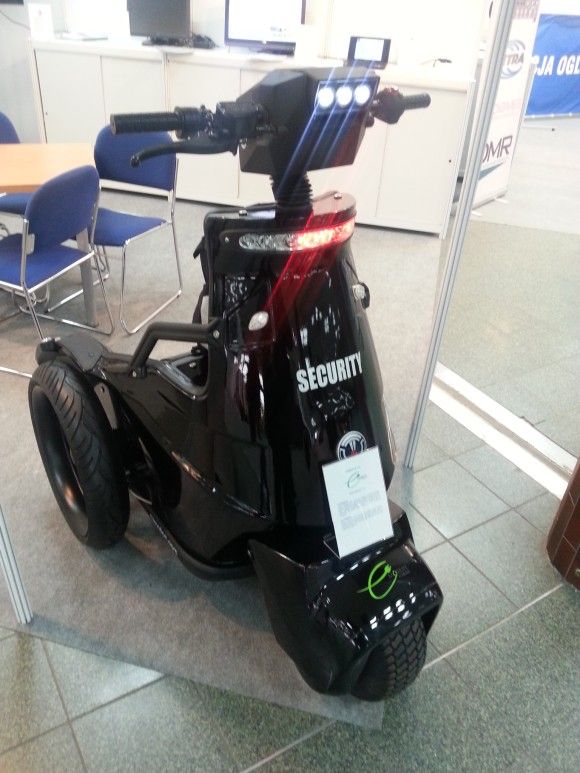Land Forces
Polish Leopards Commanded By The Germans. German Grenadiers Commanded By The Poles.
German Minister of Defence – Ursula van der Leyen, stated that the Torgelow-based Panzergrenadier (mechanized infantry) battalion would be acting under the jurisdiction of the Polish command. On the other hand, a Bundeswehr unit is going to command the Polish armoured battalion, most probably coming from the 34th Armoured Cavalry Brigade. The unit mentioned above is to be armed with the Leopard 2A5 Tanks.
According to the official information released by the German Ministry of Defence, German 411th Armoured Grenadiers (mechanized infantry) battalion is going to be acting under the command of the Polish officers. The process of shifting the command is going to be realized gradually, within the upcoming 5 years. The unit is currently using the Marder IFV’s, however, until 2020, it is probably going to be equipped with the much more modern Puma vehicles.
On the other hand, the German command is going to have a Polish armoured battalion under its jurisdiction. According to the press release issued by the German Armed Forces, after the commander of the German Land Forces visited Poland at the end of May this year, the unit is going to come from the Żagań 34th Armoured Cavalry Brigade, which means that the Polish element is going to be armed with the Leopard 2A5 tanks.
The mutual subordination of the battalions is a result of the memorandum, the aim of which is to expand the military cooperation. The document was signed last year by the Polish Minister of Defence, Tomasz Siemoniak, and his German counterpart, Ursula von der Leyen. The plans of expanding the cooperation in that way were mentioned, inter alia, by the commander of the German Land Forces, general Bruno Kasforf, during his visit in Poland, in January 2015.

The aim of the mutual subordination of the battalions is to enhance cooperation of both armies and to increase the level of interoperability. The Germans are already involved in a similar cooperation agreement, concluded with the Netherlands – in that case, a Dutch brigade is acting under jurisdiction of a German division. In our case though, cooperation would have a balanced profile, since it would be based on mutual assignment of similar units.
As it was noted by the Bundeswehr’s press service, the German 41st Brigade (which includes, among other units, the 411th Battalion), according to the intended structure, is not going to include armoured elements. 413Th Armoured Battalion is going to be transformed into a motorized-infantry (riflemen) element. Subordination of the Polish battalion will make it possible for the German unit to execute exercises together with the tanks.
It is worth noting that the 413th Armoured Battalion was, back in 2014, equipped with the Leopard 2A5 tanks – the same MBTs that are going to constitute the backbone of the Polish 34th Armoured Cavalry Brigade. It is also worth to clarify that decision regarding the increase of the target tank number which is going to be used by the Bundeswehr, from 225 up to 328 examples, is irrelevant here. That number makes it only possible to fully equip all of the units (active, reserve, training) in line with the target structure. The future plans assumes that the 41st Brigade would be re-formed and that it would become an infantry unit.

On the other hand, the Polish units, after the German battalion is equipped with the Puma IFV’s, will get a chance to conduct training operations with vehicles that were, from the very beginning, designed to cooperate with the Leopard 2 tanks. Currently, the mechanized elements of the 10th and 34th Brigades of Armoured Cavalry are utilizing the obsolete BMP-1 vehicles. This status would be maintained probably until the moment when the Borsuk IFV is introduced into service.
The decision regarding the mutual subordination of the battalions is a relevant element of cooperation between the Polish Army and the Bundeswehr – it must be noted once again that it has a mutual character. It cannot be ruled out that both battalions are going to be used in the future, e.g. within the structure of the NATO Quick Reaction Forces, at the time when the “Spearhead” would be acting under the Polish or German command. Let us recall the fact that both Warsaw, as well as Berlin have declared their readiness to command the VJTF. The current, temporary forces are commanded by a German-Dutch corps.
Due to the mutual subordination of both battalions, some worries regarding the sovereignty of command may arise. However, in the opinion of the author, these concerns are ungrounded. Firstly, the cooperation is most probably connected to peacetime operations (mainly – in a form of joint exercises). Decision to utilize the forces is most probably going to be taken by the national authorities. According to the information released by Defense News, such solution was implemented in case of the Dutch airborne brigade acting under jurisdiction of a German division.
At the same time, the Polish battalion would certainly not lose its capabilities to act within the national structures, similarly as the German element. It shall be remembered that the units that are to participate in this type of operations are usually maintaining a high level of combat readiness, and are capable of cooperating. Here, a good example is visible in case of the NATO Response Force units. VJTF operations are carried out by battalion combat groups belonging to a variety of Armies.
Mutual subordination will make it possible to improve the preparation of the units to act in a multinational combat environment, including the operations carried out by the NATO Response Force. The decision pertaining the above, additionally, may be interpreted as a political gesture, reflecting the emphasis placed by the Poles and the Germans, on cooperation within the NATO alliance.
Of course, this cannot be related to the European Army concept endorsed by the Berlin authorities, however – as indicated above – the cooperation has a mutual and balanced character, and its rules do not mean that the national command would lose control over its own armed forces. As mentioned earlier in an analysis of the German stance, the dependence on other partners may be avoided by maintaining own capabilities at a level which would be sufficient to create a fully mutual and balanced relationship. This situation is the case within the scope of the initiative, the aim of which is to transfer the Polish armoured units under the German command, while the German mechanized infantry would be acting under jurisdiction of the Polish officers.



